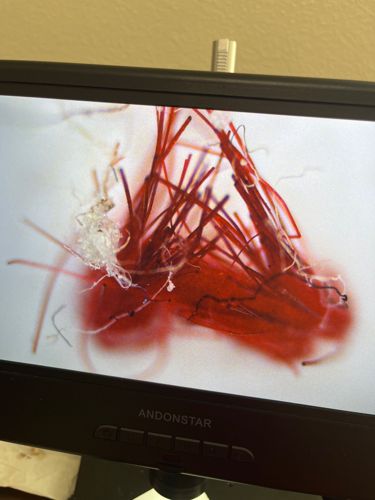Midge larva (likely Chironomid)
Scientific Name: Chironomidae (Chironomus spp. or similar)
Order & Family: Diptera (True Flies), Family Chironomidae (Non-biting Midges)
Size: Larvae typically range from 2 mm to 30 mm in length.

Natural Habitat
Aquatic environments, including ponds, lakes, rivers, and even temporary puddles. Larvae live in the sediment or attached to submerged vegetation.
Diet & Feeding
Mainly detritivores, feeding on organic matter, algae, and diatoms found in the sediment. Some species are predatory.
Behavior Patterns
Midge larvae are often found in high densities in the benthos (bottom sediments). They construct tubes of silk and sediment. The red color (as seen in the image) is due to hemoglobin, allowing them to survive in low-oxygen conditions. They undergo complete metamorphosis, with larvae developing into pupae and then adult midges that emerge from the water.
Risks & Benefits
Potential risks include adult midges, though non-biting, can emerge in very large numbers and be a nuisance. Some individuals may develop allergic reactions to adult midges. Benefits include their crucial role in aquatic food webs as a food source for fish and other aquatic invertebrates. They also aid in the decomposition of organic matter, contributing to nutrient cycling and water purification.
Identified on: 9/5/2025